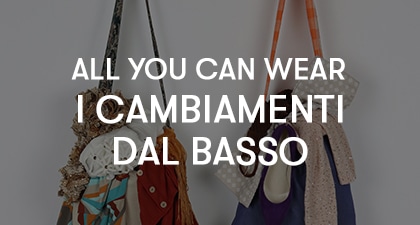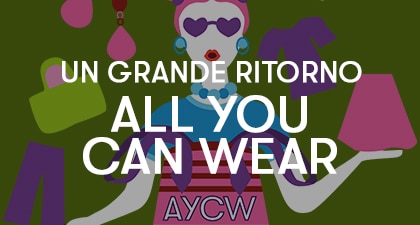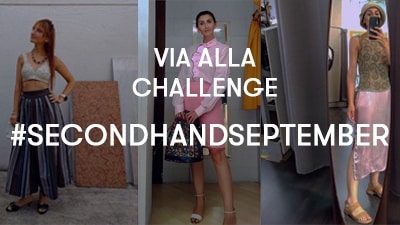
We started hearing about it a few years ago, and it’s such a clear, intuitive, and useful concept in the field of conscious shopping that it entered our minds as if we had known it forever.
The “Cost per Wear” is the cost of our clothes divided by the number of times we’ve worn them. As a result, it decreases the more we wear an item, and it’s a useful parameter to consider alongside the price of the item itself to help us understand whether it’s worth investing in.
Let’s make an example to make things clearer: let’s say we bought a sweater for 50 euros. If we wore it 5 times, the “Cost per Wear” would be 10 euros, if we wore it 10 times it would be 5 euros, and so on…

The “Cost per Wear” is a nice and very useful exercise to strengthen a practice of conscious purchasing and dissuade impulse buying, especially at fast fashion chains (the kind of “I don’t know if I need it, if it matches with what I already have in my wardrobe… but I’ll buy it anyway, it only costs a few euros).
Without at all diminishing the reasons of those who seek the lowest price for real economic reasons (hey, we are all in the same boat, and the historical period is what it is), we think that often the need for something is quite relative… Do we really NEED that dress? Or is the cheap purchase just a way to fill a void, a dissatisfaction whose effect will fade in a few days?

The “Cost per Wear” allows us to sit down and approach every purchase rationally, even while keeping an eye on our budget. With a more minimalist and thoughtful wardrobe, a greater awareness of our style, and what suits us, we can “afford” something of higher quality, buying less but more effectively. That item we’ll love and wear for 10/15/20 years will prove to be a long-term investment, and the “Cost per Wear” will decrease each time we wear it, lowering the initial price.
Returning to the extreme example of shopping at Fast Fashion chains, how many times have we bought, thinking we were saving money, cheap items that turned out to be real failures because after a few washes they fell apart? In these cases, the “Cost per Wear” may end up being higher than that of an item we invested a little more in and have used dozens and dozens of times.

One last, additional thought about the vintage world, which you know is the one that interests us most. It also turns out to be a winning choice in this light, because vintage materials are far superior to current production. Additionally, vintage sections allow us to find our favorite luxury brands at a lower cost. Starting from generally lower prices, higher quality, and holding firm the belief that we should use our purchase as much as possible, the “Cost per Wear” in the vintage world is definitely the most advantageous!
Conclusion? Go ahead with – thoughtful – purchases in this sector. And did you know that right now we have winter sales in our stores? Come visit us!






